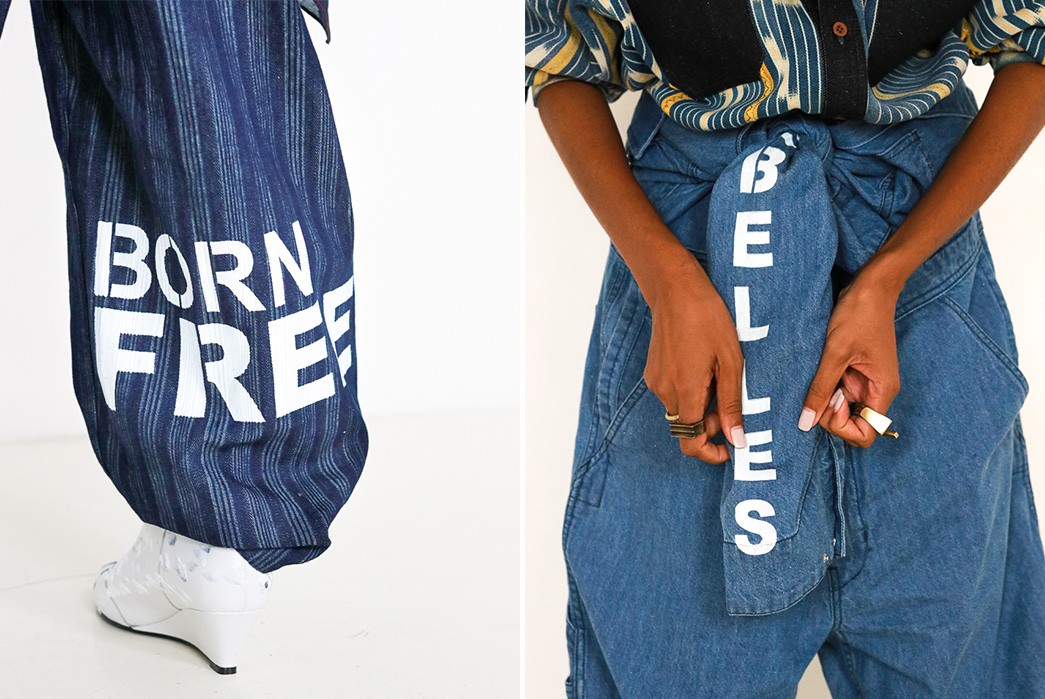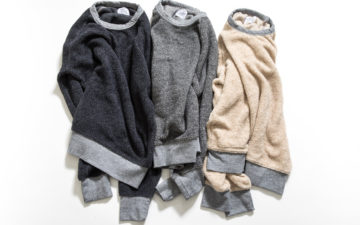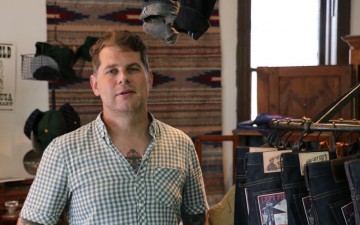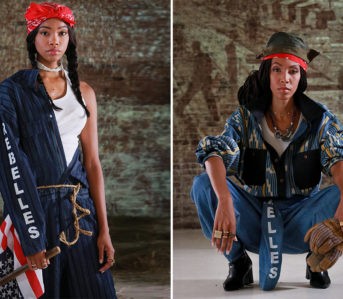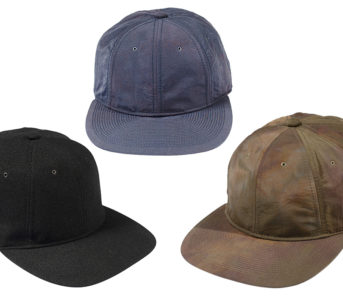Starting an independent denim brand is difficult enough, but trying to revolutionize the often exploitative relationship between product and that generates it is on a completely different level.
Neither of those have slowed down Miko Underwood, however, the founder of denim label Oak & Acorn and the recent recipient of a Bethann Hardison’s Designers Hub Grant from the Council of Fashion Designers of America (CFDA). Miko hopes to use her platform to highlight the historical inequalities of denim all the way back to when indigo was used as currency for the lives of enslaved peoples, but also to chart a course of how denim production can empower the workers who make it while minimizing the impact it has on the planet.
I spoke with Miko about all of the above, as well as what it was like for her to work with Soorty, one of the largest denim manufacturers in the world, to launch her initial collection.
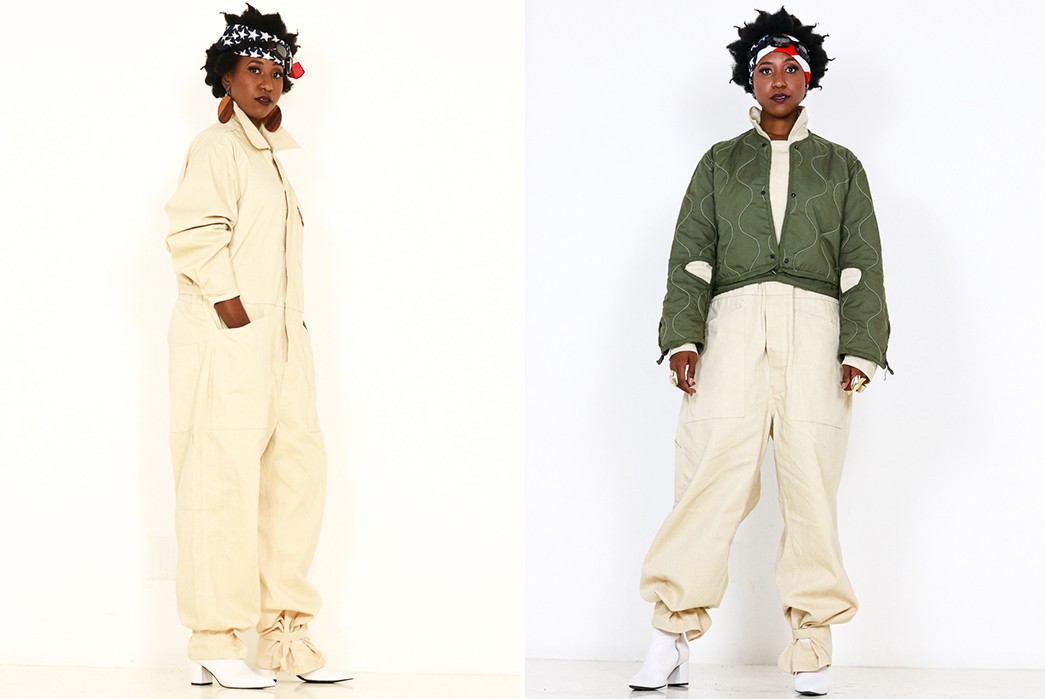
Heddels (David Shuck): The first thing that I wanted to get into is just like an overview here is how the partnership between like Oak & Acorn and Soorty came to be? Because it’s unusual for for a small designer focused brand like Oak & Acorn to be working with a producer on such a massive scale.
Miko Underwood: A dear friend of mine, Melissa Urbina, is the design manager in the New York space with Soorty. And I was telling her about what my brand is, and I, and I asked her, you know, do you think that they would be up for doing a collaboration?
So, I wrote a proposal to them and we presented it. Melissa spoke with them about it. We got on a zoom and I presented them Oak & Acorn and it was really important to me to talk about labor and the history of labor exploitation in the United States going back to enslavement. It was something that I think is a very global conversation on labor exploitation.
And it resonated for them. And besides that, Pakistan had been one of the places that I began my first experience in the factory many years ago. And so to me it felt like a 360 moment in which I was going back to Pakistan to launch this collection.
At the same time, they recognized that what we were experiencing in the pandemic highlighted how important the human impact is, the humanity and everything that we’re doing. It’s not so much about putting a product or profit over people, but prioritizing people and the stories of people in product development. And so that partnership just seemed right.
They were already doing some of their own stuff around human value and the value of being able to show the process and supporting the worker. And I believe from my experience with them that they saw the synergy in the language that I was speaking from an American perspective, but having a very global undertone of placing human value on labor and not commodifying it, but also creating sharing stories and bringing context to the work that we’re doing together.
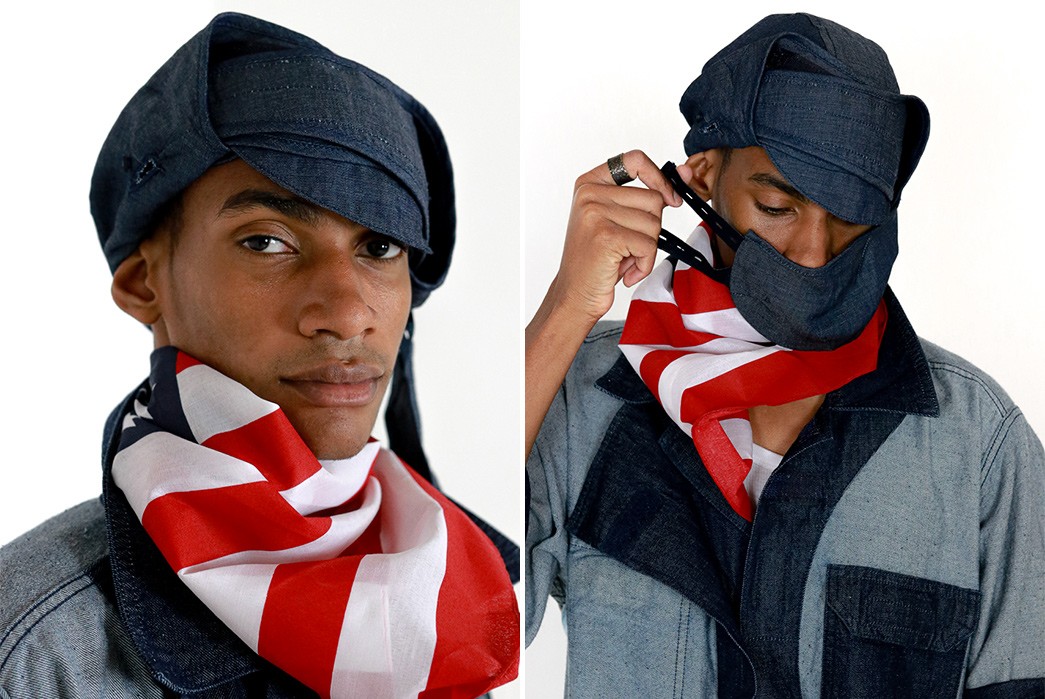
H: You mention your previous work in the industry. A lot of the folks that I know in the raw denim world come into it sideways, like they needed to make pants that didn’t rip when they were skateboarding. So they bought some denim off a jobber and they found their way into the garment district or something like that.
But you’ve been in the industry a lot longer and have a background in it before working like this with a producer like Soorty and launching this collection. Do you need that level of experience to work with a major production house and translate your vision into finished pieces?
MU: Oh it was seamless for me with them. I mean, their expertise and their understanding, their sample team and their production team understand innovation, they understand trends. And so when I explained some of the concepts and being able to talk them through it and what that would look like and choosing the right fabrications for that. There’s a level of sophistication that comes when you’ve been doing this business day in and day out on their side with mills.
I’ve had the experience of living and working overseas. And a lot of the design process is being able to translate not just an image or the product, but understanding the nuances in the style. But I think that Soorty has had so much experience with European brands, American brands, they have a wealth of experience, so they understand design nuances.
And then they bring so much of their own traditional aesthetic to it. We’ve had conversations around how we can bring more Indigenous looks into some of the pieces. These are things that I continue to want to research and bring into my garments. I want to represent the makers that I’m working with. And then there’s just all this innovation that’s happening in their fabric production.
They’re constantly making new things and thinking of new ways to bring innovation into that space. And so when you look at just from that perspective alone as a smaller emerging brand a lot of these things that are being displayed in the market when they go to big markets, whether it’s Kingpins or Premier Vision or whatever it is, where they’re presenting their fabrications, some of that stuff gets bought. And some of it doesn’t, and it gives an opportunity for a brand like me to be able to utilize what they’ve done by way of innovation and fabric treatments, and fabric weaving and test the market with them.

H: That was what I was hoping to hear that it’s not as difficult because I think a lot of people have that preconceived notion in their head that unless they’re operating at H&M scale, that working with a vertically integrated manufacturer, like Soorty is off the table. But it sounds like every step of the process was relatively easy?
MU: The first round of samples that I received from Soorty, they got it. They got it right away. You can see in my photoshoot, those are the first samples. That’s one round of samples that they were able to knock out, and were able to make a beautiful product that to me was also about showing visibility to Pakistan.
I think there is so much beautiful product, fabric, expertise, and sophistication that is coming out of Pakistan that is not often recognized. And I thought it was really important to be able to create a space where I could use my platform to share the work that’s coming out of these factories.
They took the fashion week video and shared it to the workers because it was so much about that labor and the history and my brand is really ingrained in the history of denim and being able to tell a very different denim conversation of how indigo was a commodity of enslavement of people in America, but it was a global commodity and this enslavement and this colonization of indigo stretched throughout the world before it got to America.
And this is how so many of us Brown and Black people have gotten to this country was because of that. And obviously through cotton and rum and everything else, but it was the growth of these indigo plantations that brought us into America.
That’s not something that you hear in a denim story, you just hear the traditional story of the Western or this connotation of American blue jeans is the everyday wear, but nothing that has so much depth. And it’s in the infrastructure of how the story is told. And so to me, when they were able to really get that, and they shared it with their team, the workers, it gave them a sense of empowerment.
We’re now being brought to a space where we’re being asked to look at things more deeply and be culturally responsible and culturally accountable in this moment. So it was really important to me that they got that and that they were on that page.
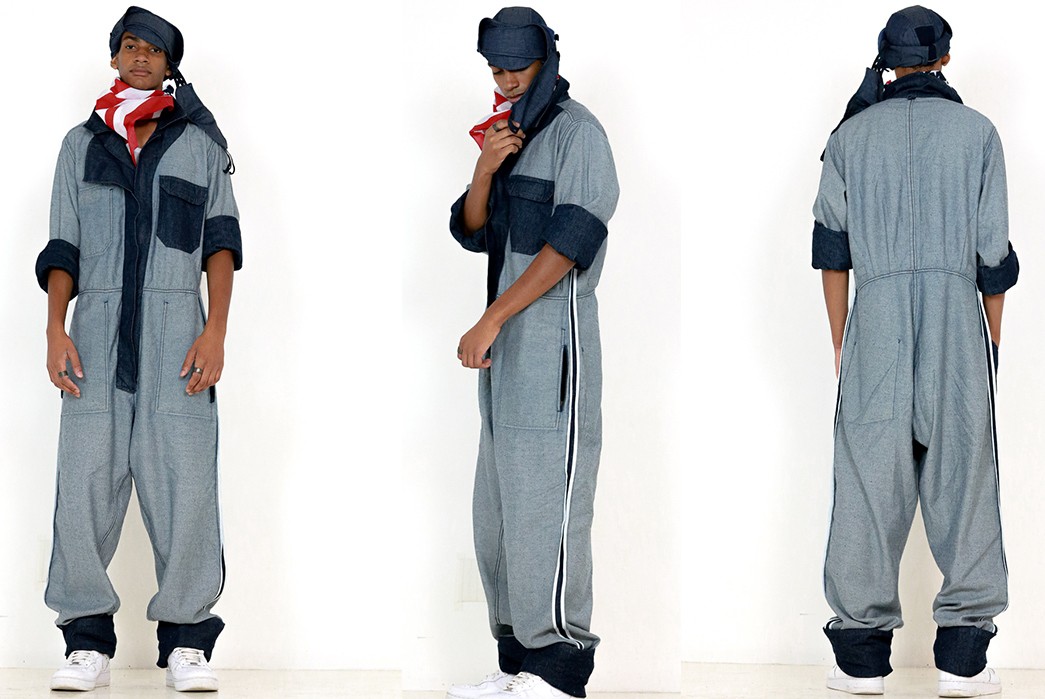
H: It’s really refreshing to hear someone bringing a new narrative to the table than the one that’s been whitewashed and overdone. Especially with relation to Pakistan to highlight that a lot of the origination of indigo happened. The Indus River Valley, Mohenjo Daro, that’s the source of human use of indigo. And it’s completely skated over now by just thinking like, “Oh Pakistan, that’s where sweatshops and low quality denim are,” when there’s a much richer history and so much more to offer.
MU: The time I went to Pakistan, I saw people that looked like my family, my family’s Caribbean and Native American and my great-grandfather is from India. And so to me, writing the story and discovering this history, I saw my own genealogy through it. There was a lot of information that was coming to me as I was reading and researching it.
And I saw the genealogy of my own family in the story of indigo. And so I said, “Oh, this is a global conversation.” This is not, you know, we’re going to talk about jean making, which is a global commodity. We can’t just talk about American jeans and not pay homage to the people who put so much of their blood, sweat, and tears into it. There were bloody vats of indigo coming around the world to this space. The value of two yards of fabric was equivalent to one person’s life.
You cannot talk about this without really understanding what was sacrificed in order for us to just get to this point where in the design space as being a “fashion designer” or a “denim designer”, and the fashion space not recognizing the American jean or jean making or denim making as this luxury commodity, or privileging it in the space with all of these “luxury designers”.
So I’m trying to speak to both spaces and I’m super excited to be supported by the CFDA and large organizations like this who have now seen me as being able to talk about something and innovate in a space. Because when we talk about American manufacturing and fashion, the first pieces where the work that were made here, which was on the enslaved people, that’s where the fashion community began in America.
And so you have to talk about the denim conversation. You can’t just look at it as, “Oh, jeans are a throwaway item.” They’re literally the backbone of why we have fashion in America. And so to me, it was really important to be able to show both sides and how these things intersect.
H: Is there anything else you think it’s important for people to know about the upcoming collection?
MU: 20% of the profits from our Signature REBELLE Coverall collection, produced by Soorty, goes to support initiatives of We Got Us Now, a nonprofit organization that is built by, led by and about children and young adults impacted by parental incarceration. Also it’s my personal story. My Dad has been in prison for 32 years, most of my life. My siblings & I have been working to get him home.
H: Thanks so much for talking with me, Miko, we look forward to the new collection launches in a couple months and I hope your dad can make it home safe very soon.
MU: Thank you so much, David. I appreciate you taking time to speak with me.
“Oak & Acorn ~ Only for the Rebelles” products will be launching in Nordstrom in February and Shopbop in March. You can keep up with Miko and the brand on their website.

